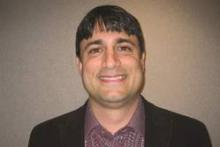Notably, this set of factors worked similarly well in both the development cohort and the validation cohort, even though the latter had a greater severity of injury.
“All traumatic brain injury patients under the age of 2 [years] with intradural blood on CT should be placed on continuous video EEG,” recommended Dr. Rajaraman, who disclosed that he had no relevant conflicts of interest. “Additionally, if history suggests abusive head trauma, they are even more likely to have subclinical seizures.”
By using these factors to help identify these patients, “we can treat them sooner based on the video EEG monitoring. It’s also more cost-effective and more practical,” he added.
Dr. Jason T. Lerner a pediatric neurologist with UCLA Medical Center and a coinvestigator on the study, noted that the next step is to further test the factors’ validity in a broader population.
“Now we are working with the rest of the [Critical Care EEG Monitoring Research Consortium]. So we know the model works in two centers across the country on different coasts; now we are looking at another dozen different centers to see if this is something that does translate throughout the entire country, then hopefully even the world,” explained Dr. Lerner, who disclosed that he had no relevant conflicts of interest.


